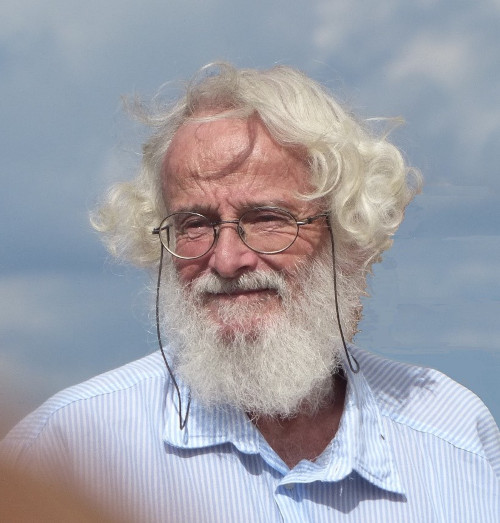 Gavril Grueff (Photo courtesy of Mauro Nanni)
Gavril Grueff (Photo courtesy of Mauro Nanni)
Gavril Grueff
Contributed by Luigina Feretti and Giancarlo Setti
Gavril Grueff was born in Venice (Italy) on July 24, 1942, and died in Sasso Marconi (Bologna) on July 7, 2022. He was a key figure in the Italian radio astronomy, having played a fundamental role in the realization of the Italian radio telescopes, from the Northern Cross to the VLBI antennas of Medicina and Noto, and to the Sardinia Radio Telescope (SRT), over a period of half a century.
Since 1965, he joined the team of scientists and technicians of the University of Bologna who carried out the first major Italian radio astronomical project, the Northern Cross Radio Telescope of Medicina (Bologna). He was among the scientists who first recorded signals from the transit of extragalactic radio sources and actively contributed to the production of the B2 and B3 radio source catalogs. With these catalogues, he carried out cosmological studies on radio source counts and also conducted follow-up studies in optical and radio at high resolution. This gave him the opportunity to work at the California Institute of Technology (Caltech) and enhance his experience with the Owens Valley interferometer and the Mount Palomar telescopes.
As member of the the research staff of the newly (1970) funded Institute of Radio Astronomy CNR (Bologna), Grueff's skill and competence were of basic importance for the updating of the Northern Cross and the planning of the new Italian radio telescopes designed to work primarily in the VLBI networks, both astronomical and geodynamical. Following a successful funding proposal with the CNR, he was charged with the overall coordination of the construction of the antennas of Medicina and Noto, inaugurated in 1983 and 1988, respectively.
In the 1990s, Grueff, as project manager, led the feasibility study funded by the Italian Space Agency for the realization of a fully steerable 64m parabolic antenna, later funded as the Sardinia Radio Telescope in the framework of a law for the science development of Southern Italy. Grueff started the SRT project, working closely with the technical staff, and transferring to them his competence and expertise, and was involved with the final decision concerning the SRT site. Subsequently, he continued to contribute actively to the project as an "expert" member of the SRT Management Board, and finally as a consultant to the President of the Board itself, bringing his knowledge and skills to the benefit of the project and of the Italian radio astronomy.
He was Acting Director of the Institute of Radio Astronomy CNR from 1982 to 1986, and in 1986 he became Italian representative in the U.S. VLBI Network Consortium Committee. He held the position of full professor in the Department of Astronomy of the University of Bologna from 1986 to 2002, and taught a course on Cosmology. In 2002 he left the university to concentrate on the SRT project, as Associate with the Institute of Radio Astronomy.
Gavril Grueff will be remembered for his great competence and ability to identify and solve problems related to radio telescopes and radio astronomical science, and also for his remarkable intellectual honesty. He was one the few radio astronomers in the world able to both build and use instruments to enhance astronomical progress.
![[IAU logo]](iau_wb_thumb.jpg)
![[URSI logo]](URSI-logo-thumb.jpg)
![[Karl Jansky at his antenna]](jansky_photo_02_thumb.jpg)
![[Reber's Wheaton antenna]](Reber_Telescope_Wheaton_thumb.jpg)
![[Dover Heights]](Dover_Heights_02_thumb.jpg)
![[4C telescope]](GB61-195_4C_telescope_thumb.jpg)
![[Ewen and horn antenna]](ewen_horn1s.jpg)
![[Dwingeloo, 1956]](Dwingeloo-1956-thumb.jpg)
![[Jocelyn Bell Burnell and Cambridge antenna used in pulsar discovery]](burnell2_thumb.jpg)
![[Lovell Telescope at Jodrell Bank]](site_1594_0001-500-334-20180316163019-thumb150.jpg)
![[Wilson, Penzias, and Bell Labs horn antenna]](wilson-penzias-horn_thumb.jpg)
![[6-m Millimeter Radio Telescope in Mitaka, Japan]](6m-thumb.jpg)

